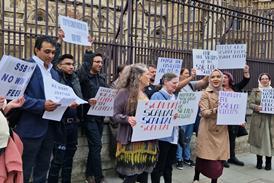Ancillary relief – Financial provision orders – Fresh evidence
Erik Maurice William Robson v Chloe Annabel Robson: CA (Civ Div) (Lords Justices Ward, Hughes, Patten): 27 October 2010
The appellant husband (H) appealed against an award made to the respondent wife (W) in ancillary relief proceedings.
H and W had been married for more than 20 years and had two children, aged 20 and 17. H had inherited substantial wealth, including a large farm estate. The judge identified the important factors in the case, including the nature and value of the marital assets, the extravagant lifestyle of the parties and the agreement, arrangements or understanding underlying that lifestyle, including the parties’ approach to H’s inherited wealth. He concluded that H and W had effectively lived off the inherited assets and stated that the main principles to be applied to achieve a fair result were need, compensation and sharing. He stated that the source of the assets, that they were inherited by H before the marriage, was a relevant factor. He found H’s net worth to be approximately £20m and ordered him to pay a lump sum of £8m to W. He ordered the sale of the farm estate to fund that payment. Periodical payments were to be made until the sum was paid in full when a clean break would be effected. Both parties sought to adduce further evidence for the appeal proceedings relating to events subsequent to the making of the order.
Held: (1) When considering ‘big money’ ancillary relief cases where the wealth was inherited, the courts should concentrate on section 25 of the Matrimonial Causes Act 1973, which imposed a duty on the court to have regard to all the circumstances of a case, with consideration first being given to the welfare of any children of the family who were under the age of 18, and then to the specific factors in section 25(2). Confusion would be avoided if resort was had to the precise language of the statute. The weight to be given to each factor depended on the particular facts and circumstances of a case and, although there was no order of importance, each factor had to be given its due weight. That would ensure flexibility was built into the exercise of discretion and, as with every exercise of judicial discretion, the objective had to be to reach a just result. Need, compensation and sharing would usually guide that search for fairness. As inherited wealth formed part of the property and financial resources of a party, it had to be taken into account pursuant to section 25(2)(a). The other factors also had to be taken into account, but the fact that wealth was inherited and not earned justified it being treated differently from wealth accruing from the joint efforts of the parties. It was not only the source of the wealth which was relevant but its nature. An ancestral castle might deserve different treatment from a farm inherited from a party’s father who had acquired it in his lifetime, just as a valuable heirloom was of a different character from an inherited portfolio of stocks and shares. The nature and source of an asset might well be a good reason for departing from equality within the sharing principle. The duration of the marriage and the time the wealth had been enjoyed by the parties would also be relevant, as would their standard of living and the extent to which it had been afforded and enhanced by drawing down on that added wealth. The way the property was preserved, enhanced or depleted were also factors to be taken into account. When property was acquired before or inherited during a marriage, it might be said that the spouse to whom it had been given should in fairness be allowed to keep it. On the other hand, the more and longer that wealth had been enjoyed, the less fair it was that it should be ringfenced so as to render it unavailable to meet a party’s needs generated by the relationship. Judges should be cautious and not invade inherited property unnecessarily. The fact was that no formula and no resort to percentages would provide the right answer. Weighing the various factors and striking the balance of fairness was an art, not a science (see paragraph 43 of judgment).
(2) There was a bracket within which the judge had had to endeavour to find that sum of money which would enable W to enjoy a comfortable life while living independently from H. Being fair to both parties, the right sum to award was a total lump sum of £7m. Looking at the case in the round, that would leave W well provided for and H could afford to make the payment from the proceeds of sale of the estate. The essential balance between needs and resources would be struck (paragraphs 93-94).
(3) The Court of Appeal should be very cautious in admitting fresh evidence of events which had occurred after an order had been made. The criteria established in Ladd v Marshall [1954] 1 WLR 1489 CA of former unavailability, important significance and credibility were principally designed for evidence which related to past events. It did not follow that evidence of new events, which by definition was evidence which was not available at trial, should be admitted, Ladd v Marshall considered (paragraph 96).
Appeal allowed.
Tim Amos QC, Oliver Wise (instructed by Bircham Dyson Bell) for the appellant; David Balcombe QC, Nicholas Westley (instructed by Farrer & Co) for the respondent.



























No comments yet